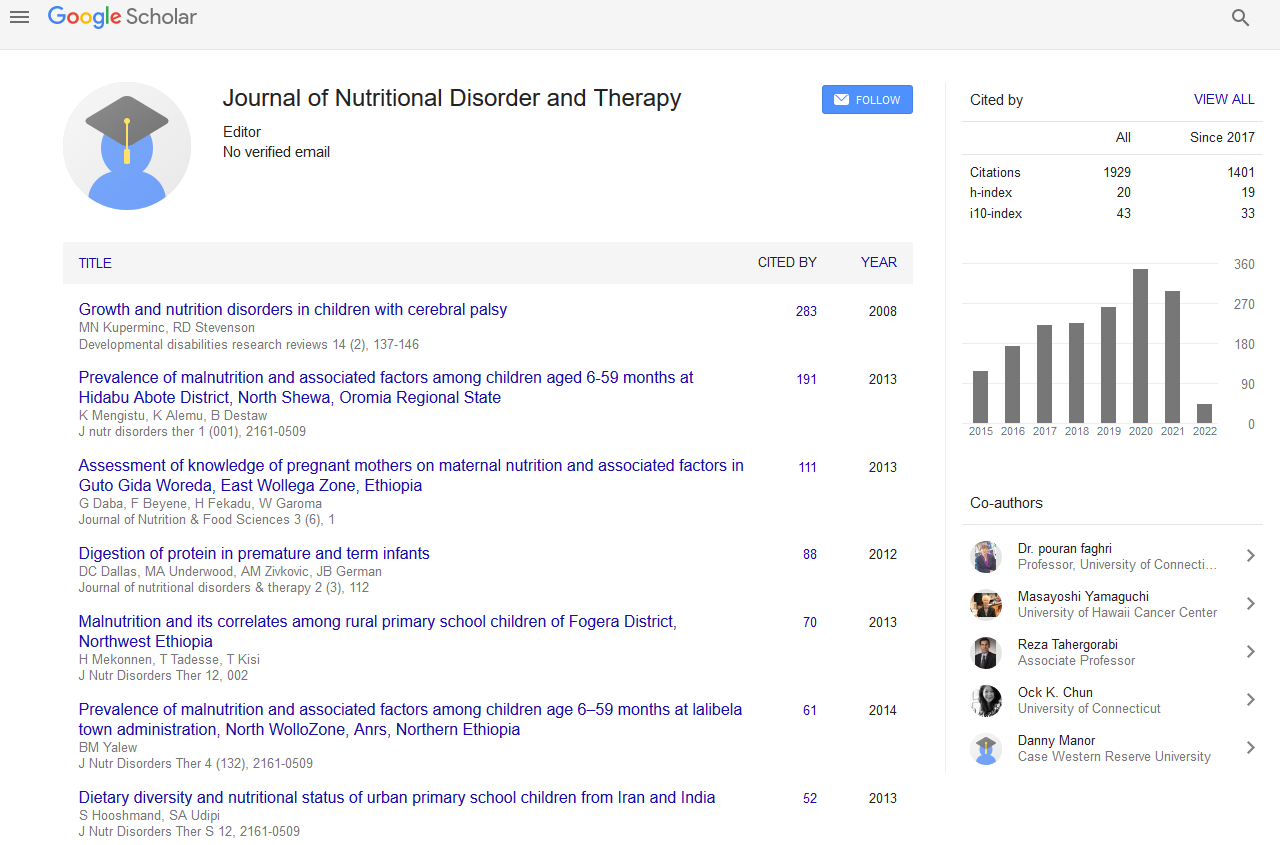Indexed In
- Open J Gate
- Genamics JournalSeek
- Academic Keys
- JournalTOCs
- Ulrich's Periodicals Directory
- RefSeek
- Hamdard University
- EBSCO A-Z
- OCLC- WorldCat
- Publons
- Geneva Foundation for Medical Education and Research
- Euro Pub
Useful Links
Share This Page
Journal Flyer

Open Access Journals
- Agri and Aquaculture
- Biochemistry
- Bioinformatics & Systems Biology
- Business & Management
- Chemistry
- Clinical Sciences
- Engineering
- Food & Nutrition
- General Science
- Genetics & Molecular Biology
- Immunology & Microbiology
- Medical Sciences
- Neuroscience & Psychology
- Nursing & Health Care
- Pharmaceutical Sciences
Chemical constituents of agarwood
JOINT EVENT: 13th International Congress on Advances in Natural Medicines Nutraceuticals & Neurocognition & 14th International Conference on Clinical Nutrition
July 27-29, 2017 Rome, Italy
Jeong Hill Park, Chi Thanh Ma, Bo Wu and Sung Won Kwon
Seoul National University, Korea
University of Medicine and Pharmacy, Vietnam
China Medical University, Shenyang, China
Posters & Accepted Abstracts: J Nutr Disorders Ther
Abstract:
The Aquilaria, consisting of 14 species of trees which belong to Thymelaeaceae, is mainly distributed in the rainforest of Southeast Asia and India. Several species of this genus produce a dark aromatic resin in response to the insects, physical cut, microbial infections, or chemical stimulation. The resin-deposited heartwood is known as agarwood, which has long been used as an incense, sedative, analgesic and digestive herbal medicine in Asia. For the study on the chemical constituents and its biological activity, we extracted agarwood chips from artificially inoculated A. malaccensis. 34 compounds were isolated from the agarwood and their structures were elucidated using extensive spectroscopic methods which include NMR, Mass, IR and CD spectroscopy. Most of them are sesquiterpenes or 2-(2-phenylethyl)-chromone compounds. Anti-proliferation activity was tested for the isolated compounds. Compound I and J showed strong anti-proliferation activity against A-549 human lung cancer cell line.
Biography :
Jeong Hill Park has completed his PhD in 1987 from Seoul National University. He is a Professor at College of Pharmacy, Seoul National University since 1988. His main research interest is the development of biologically active natural products including ginseng and agarwood. He published more than 250 research papers and filed more than 20 patents.


